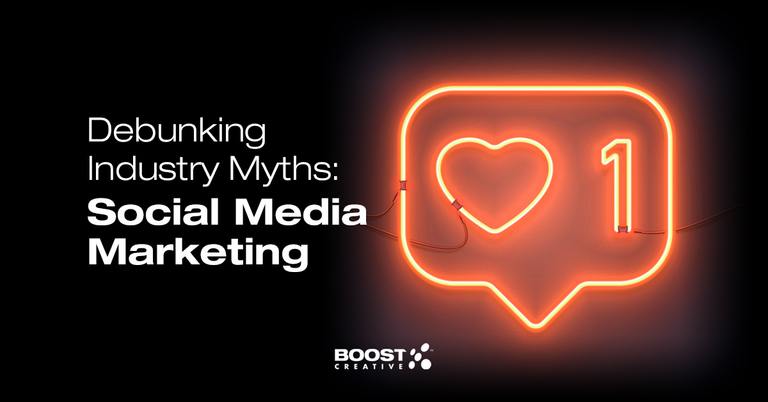
Google Ads 101 – Campaign Types
Search vs Display Campaigns
Search Only Ads
Search Ads are text advertisements that can appear above or below search results on Google based upon a user’s search queries, or keywords. They can also appear beside, above, or below search results on Google Play, Google Shopping, and Google Maps, including the Maps app.
Ads might appear with search results on websites of Google search partners. For text ads, search partners include hundreds of non-Google websites, as well as Google Video, and other Google sites. Search Only campaigns do not utilize the Google Display Network
Display Ads
Display Ads are graphic images that are used to advertise a product or service through Google’s Display Network. Commonly known as banner ads, Display Ads function differently than text ads because they are not found in search results. They can be found on websites and apps and appear in many shapes and sizes to attract the user to take a specified action.
Re-targeting can also be used for these ads. For example, on ecommerce or shopping site a user may place something in his or her cart and then leave the site without purchasing. Ads can then be used to advertise exactly what that user placed in his or her cart to get them to complete the purchase that they left before. Display Only campaigns do not utilize text Search Ads.
Display only campaigns are also the only campaigns that can utilize custom affinity audiences. Display only campaigns can take data from similar websites (such as direct competitors) and retarget towards those that frequent their websites. This option is only available to campaigns that are display only. This should be taken into consideration when determining what campaign, or combination of campaigns, are the right strategy for your business.
A Combination of Both…
Search Advertising with Display Extension allows for both Search and Display to be housed under one single campaign. This is beneficial to companies who would like to utilize both types of advertisements but have a limited daily budget. The daily budget will go towards Search clicks first and Display clicks second. Search ads can only target locations, prior search history and demographics (audiences). Display ads have the added targeting of specific website placement and website topics because they are viewed outside of search results.
Which is right for you?
When determining your type of campaign and how many campaigns to have, there are a few things you should keep in mind:
Search with Display is not always the best choice.
Despite the Search with Display option seeming like the go-to choice, it does have a few pitfalls. First of most is that your budget will be allocated towards search before display. Display tends to have a cheaper cost-per-click (CPC) and can be a powerful tool in terms of brand identity and customer recall. Display also tends to attract more clicks due to its visual appeal. If you have a combination campaign of search and display, the display feature will not be utilized to its full extent. Furthermore, it restricts your ability to target custom audiences based upon related websites or browsing history.
Budget can dictate your campaign number.
Another factor to keep in mind when choosing your campaign type is your overall budget. The daily budget is controlled at the campaign level. So, if you include all your business’s service lines (or “buckets” as we commonly call them), all service lines must share from the same single budget. This means that you will not be able to promote one “bucket” over another. While this is not an issue for all businesses, some would like to have the ability to control how much advertising goes towards what service. To do this, separate campaigns would have to be made for each service.
For example, you own a hair salon that also offers nail services. Hair services account for over 75% of your company’s revenue while nails only occupies 25%. You find that you need to increase your nail service profits in order to offset the overhead cost of supplies and staffing. You decide that advertising your nail services in Google Ads will bring you those extra clients. Additionally, you don’t want to abandon all advertising efforts for hair, so you would like to include advertisements for hair services in your Google Ads strategy. You would like to spend no more than $20 a day in clicks (ad spend) each month.
Your initial plan is to have both services housed under one single campaign as separate ad groups. You then add all of the relevant keywords relating to all your array of services within each topic to each ad group, resulting in large ad groups with very generalized advertisements. You quickly find that hair exhausts a majority of your budget and attracts the most clicks, leaving nails with barely any advertising. This is the opposite of your goals and find yourself unable to push nails more than hair in this current structure.
Instead, two separate campaigns should have been created – one for hair and one for nails. The separate campaigns would allow for the ads to have their own individual budgets and operate independently from one another. In this case, the nails campaign would have a higher budget of $12/day and the hair campaign would use the remaining $8/day. Also, by separating the topics down into separate campaigns, subsections from each service could then be broken into ad groups and provide highly tailored advertisements relevant to specific keyword searches.
Location, Location, Location
Location targeting is another aspect that can affect your overall number of campaigns and budgets. Targeting based upon location, or Geotargeting, is an excellent way to maximize your ad spend by making sure your ads are only being served to those within a desired area. Locations can target as small as a 1 mile radius of an address, to zipcodes, states and countries. Also known as Geofencing, having location targeting enabled for your ads makes sure that clicks (aka cost) are not wasted on someone that is irrelevant to your business. Similar to how keywords can affect your average cost per click, so can specific areas. When using the same keywords, an area that may only need an average cost per click (CPC) of $1 could show an estimated average position of 1, but another may require a higher or lower CPC to yield the same result. Typically, areas with higher populations result in a higher average CPC – meaning a higher monthly budget to ensure your daily ad budget is not exhausted within only a few clicks.
For example, you have an online ecommerce business selling winter gear and plan to advertise through Google Ads. You are only wanting to ship within the United States, so you set your targeted location accordingly. You quickly find that your initial plan to spend $30/day in ad spend, or $912 / month, is being quickly exhausted and affecting the success of your campaign. You will have to increase your daily budget in order to allow for your ads to be seen. This isn’t a possibility give your current budget so you start evaluating the data. When you look at the locations where your clicks are occurring, you find you are getting a lot of clicks from warmer states, such as Florida and Arizona. When you cross reference this with the locations of your orders, you realize that clicks are being wasted on those states because they are bouncing once they reach your site. The states with the highest rates of conversions are those with colder climates, such as New York, Illinois and Ohio.
You decide that in order to increase your ROI, you will target states with colder climates. As an added benefit, once you do this you find that your click through rates (CTR) are increasing due to the higher relevancy of your ads to users. This leads to a lower avg CPC and allows for you to remain comfortably in your desired budget.
Locations vs Number of Campaigns
Just like our discussion about aligning your campaigns based upon the priorities within your service lines, the priority of locations should also be considered when deciding your overall budget and campaign structure. This means that if you want to target several locations, each with their own allocated budgets, you will need to make each of them their own campaigns. When you combine multiple locations with one another, the areas with larger/more dense populations will consume a majority of the ad budget.
For example, you own a cake business that is based in Fort Myers. You are wanting to advertise your services to Fort Myers, Cape Coral, and Estero. These areas provide a low overhead cost to you because instead of having to deliver them, many clients coming to your shop to pick up their cakes. This saves you in both time and driving costs so that you can focus on taking in new orders. On occasion, you have received calls from Tampa that result in larger paying jobs, but the downside is the cost in both gas and time it takes to deliver cakes. Because Tampa is a common hub for corporate and other large scale events, you want to include advertising in that area, but want the majority of your funds to go towards advertising in the Lee County area.
You set up a single campaign and target Tampa, Fort Myers, Cape Coral and Estero. You see your budget is being exhausted quickly and your clicks are primarily occurring in the Tampa region. While your calls from Tampa have increased, your number of new clients in the surrounding Lee County area has not changed. You find these locations are barely getting any clicks or impressions and a majority of your budget is being absorbed by those in the Tampa area.
The solution to this issue is to separate your campaigns to focus on individual areas. Now you can allocate 3/4 of your budget to the surrounding area and have only 1/4 go towards the Tampa region. Your calls quickly change to now being primarily from your desired regions with the occasional call from Tampa. Your ad strategy now meets your goals and is now showing a positive return on investment (ROI).
No campaign is one-size-fits-all
No two companies are identical to one another. Every company is different. They have distinguishable traits that make them stand apart from the crowd and keeps their customers coming back again and again. Just like there are no two identical companies, there are no identical Google Ad campaigns. Google Ads should never be approached with a one-size-fits-all method. It is a constantly varied, ever changing advertising platform. Those that see it as a set-and-forget type of outlet will find that their advertising endeavors won’t produce positive results. The best way to get the most out of a Google PPC campaign is to have a targeted, ever-evolving strategy that requires constant tweaking and adjustments to result in a high return on investment (ROI).
It is for this reason that, unless you are a PPC pro, we suggest hiring a PPC management service, such as Boost Creative. The team at Boost Creative are up to date on all the best practices of PPC and Google Ads, and have experience optimizing accounts to provide clients the best ROI possible. Contact us today if you are interested to learn Boost can help your pay-per-click marketing efforts.
About Boost Creative
We are Southwest Florida’s proven design resource for digital and print marketing for over 15 years. Our specialties include corporate identity, advertising campaigns, website development, and content marketing. We also offer a range of other services including marketing consultation, print production, search engine marketing (SEM), and social media marketing. Our team is composed of creative minded, forward thinkers. With solid multi-industry experience and a foundation in education…we are the real deal. We serve businesses all over the country and are the chosen outsource option for many other advertising agencies and marketing consultants. Learn more about who we are.
You May Like

ADA Website Compliance
Is your website ADA Compliant? If not, you leave your business susceptible to a potential lawsuit. Luckily, the team at Boost Creative has put together this quick guide that could help prevent an ADA Compliance

Debunking Industry Myths: Social Media Marketing
The social media industry has been around long enough to rack up some pretty major myths. While many myths have been debunked, there are still a few that have a following and linger, simply because
